This grilled-and-braised red cabbage brings big, modern flavor to a humble vegetable. First, a hot sear builds smoky char; then a gentle braise with broth, citrus juice, and white wine vinegar softens the wedges to fork-tender perfection. A bright, lemony tahini sauce adds creaminess without dairy, while quick couscous turns it into a satisfying vegetarian main. Packed with antioxidants, fiber, and plant-based fats, it’s a win for healthy BBQ or weeknight oven cooking. Serve family-style with toasted almonds for crunch and pour a chilled dry white alongside—simple, stunning, and deeply flavorful.
Recipe Story
Braised red cabbage is classic across Central and Northern Europe, but here it meets Levantine tahini and Mediterranean citrus. The technique blends West and East: a skillet sear to develop umami and light smoke, then a covered braise that preserves nutrients and delivers tenderness. The citrus-tahini pairing offers a sweet-tart balance and lush texture—proof that everyday vegetables can headline the plate.
Time
- Prep: 20 minutes
- Cook: 40 minutes
- Total: 1 hour
Ingredients
(exact user list, unmodified)
For the cabbage
- 1 large red cabbage
- 4 to 6 tablespoons extra-virgin olive oil
- A Tsp salt for seasoning, plus 1 teaspoon
- Freshly ground pepper
- 4 medium shallots or onions, peeled and cut lengthwise into quarters
- 1 lemon, cut lengthwise into quarters
- 1 cup vegetable or chicken broth
- ¼ cup white wine vinegar
- Juice of 1 orange
- 1 cup uncooked couscous
- 2 tablespoons coarsely chopped roasted, salted almonds
For the sauce
- Zest of 1 lemon
- ½ cup tahini, plus more if needed
- ¼ cup water, plus more if needed
- 1 tablespoon honey
- 1 teaspoon salt, plus more as needed
- Freshly ground pepper
Instructions
(strictly identical to the user’s steps)
- Make the cabbage: Cut the cabbage into 5 or 6 wedges, slicing lengthwise through the core. Cut out the tough inner core and discard.
- In a large ovenproof skillet (I use a Le Creuset braiser), heat 2 tablespoons of the olive oil over medium-high heat. Brush each side of the cabbage with 1 to 2 tablespoons of the remaining olive oil, season with a sprinkle of salt and pepper, and place the cabbage in the skillet, cut-side down.
- Cook until charred on each side, 4 to 5 minutes per side. Be careful when turning the cabbage to retain the shape of the wedge.
- Transfer the cabbage to a plate. Set aside.
- Preheat the oven to 375°F.
- In the same skillet, warm 1 to 2 tablespoons of the remaining olive oil over medium heat. Add the shallots, 1 teaspoon salt, and several grinds of pepper and cook, stirring occasionally, until the shallots start to caramelize, 3 to 4 minutes. Add the lemon wedges and cook until the lemons start to take on a slightly golden color, 2 to 3 minutes.
- Increase the heat to high and pour the broth, vinegar, and orange juice over the shallots and lemon wedges. As soon as it starts to boil, transfer 2 to 3 tablespoons of this braising liquid to a small bowl and set aside, then turn the heat off and gently return the cabbage wedges to the skillet.
- Cover the skillet with a lid, transfer it to the oven, and roast for 30 minutes, turning the cabbage wedges once halfway through.
- While the cabbage is braising, prepare the couscous according to the package instructions (if using).
- Make the tahini sauce: In a medium bowl, whisk the reserved braising liquid, orange zest, tahini, water, honey, salt, and several grinds of pepper. The sauce should have a pourable consistency. If it’s too thick, add more water. If it’s too thin, add 1 to 2 more tablespoons tahini. Taste for seasoning and add more salt and pepper, if desired.
- When ready to serve, spread the tahini sauce on a platter and top with the couscous (if using), cabbage wedges, shallots, lemon wedges, almonds, and« a few grinds of pepper. You can also serve the cabbage wedges at the table straight out of the skillet with a bowl of the tahini sauce on the side. The sauce can be prepared up to 3 days in advance. The cabbage and couscous is best eaten on the day it’s made.
Plating & Pairings
Serve on a wide white platter to showcase the deep purple cabbage. Drizzle a touch of extra-virgin olive oil and finish with fresh herbs (parsley, cilantro, or mint). Pair with a dry white (Assyrtiko, Sauvignon Blanc, Chablis) or sparkling water with lemon. For a fully vegan pour, swap honey for agave.
Dietary Variations
- 🟢 Vegetarian & Vegan: use vegetable broth and agave instead of honey.
- 🌾 Gluten-Free: replace couscous with quinoa, millet, or basmati rice.
- 🥛 Dairy-Free: naturally dairy-free.
- 💪 High Fiber & Antioxidants: thanks to red cabbage, tahini, and citrus.
🍽️ Nutrition Facts (per serving, 4 servings)
| Item | Amount | % DV* |
|---|---|---|
| Calories 🔥 | 460 kcal | 23% |
| Total Fat 🥑 | 26 g | 33% |
| Saturated Fat 🧈 | 3.5 g | 18% |
| Omega-3 🐟 | 0.3 g | 10% |
| Carbohydrates 🍞 | 44 g | 16% |
| Total Sugars 🍯 | 9 g | — |
| Fiber 🌾 | 8 g | 29% |
| Protein 🍗 | 10 g | 20% |
| Cholesterol 🚫 | 0 mg | 0% |
| Sodium 🧂 | 1100 mg | 48% |
| Calcium 🦴 | 120 mg | 9% |
| Iron 💪 | 2.3 mg | 13% |
| Vitamin B12 💊 | 0 µg | 0% |
*Daily Values based on a 2000 kcal diet.
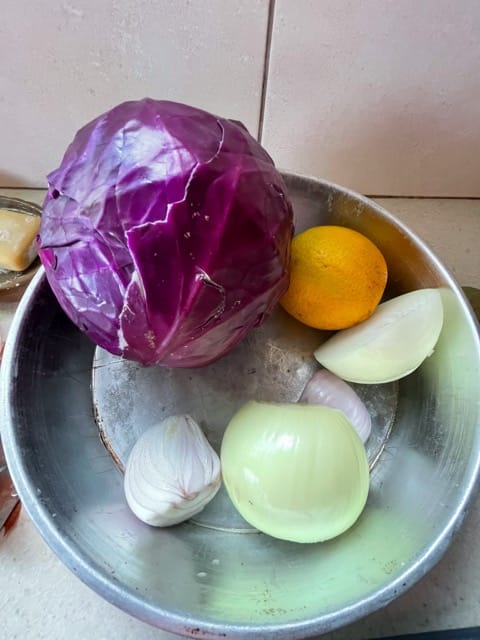
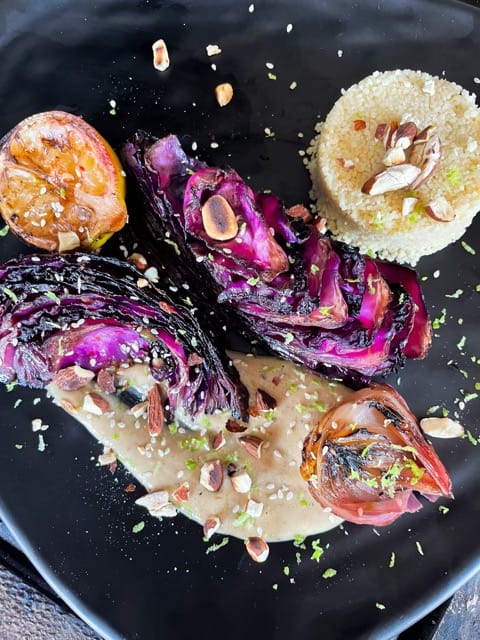

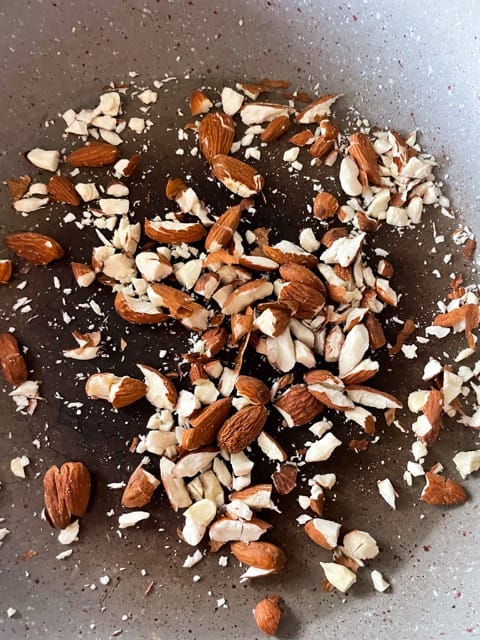
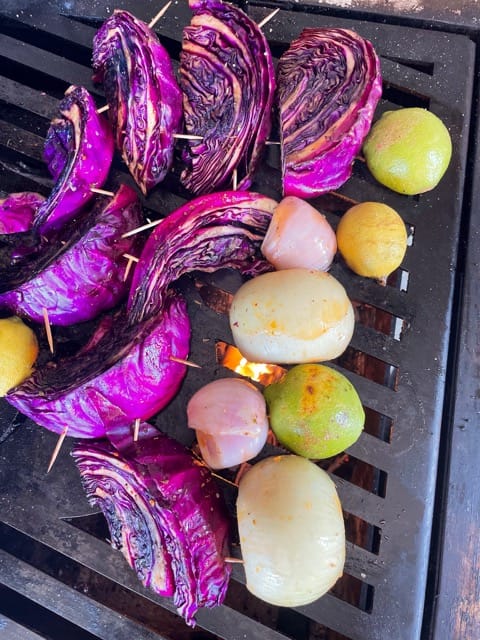
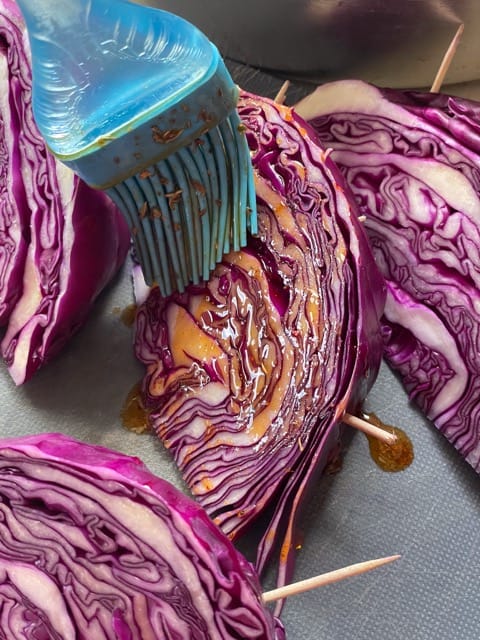
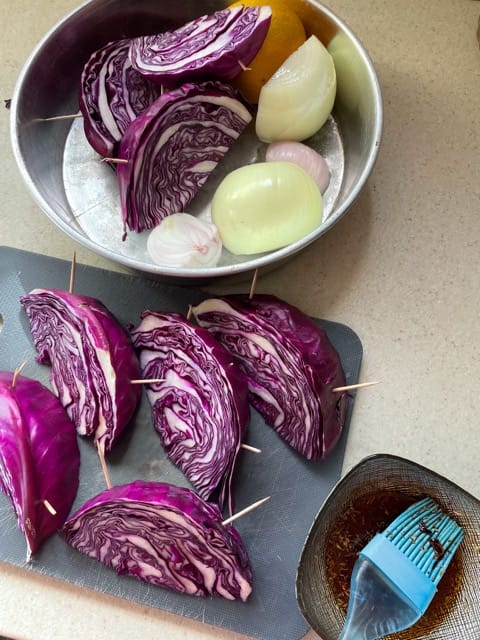
🧬 Health Sheet – Cancer + Diabetes
Yes. It balances fiber, plant fats, and antioxidants, while supporting the gut and reducing reliance on animal products.
🧬 Click to expand
🧬 Cancer Analysis:
✅ Benefits: red cabbage provides anthocyanins and polyphenols that counter oxidative stress; tahini contributes lignans and minerals.
⚠️ Watch-outs: avoid excessive charring to limit PAH formation.
📌 Recommendations: sear over moderate heat, lid on for gentle braising; keep flames off the food.
🍬 Diabetes Analysis:
✅ Benefits: fiber + fat slow glucose absorption; overall moderate carb load when couscous is portioned.
⚠️ Watch-outs: couscous can spike glycemia if oversized.
📌 Recommendations: portion couscous carefully or use quinoa; swap honey for agave if needed.
✅ Health Summary:
A complete meatless main rich in fiber, minerals, and protective phytochemicals—heart- and gut-friendly when cooked without flames.
🧠 Health Tip:
Add a squeeze of fresh lemon at the table to boost non-heme iron absorption from the meal.

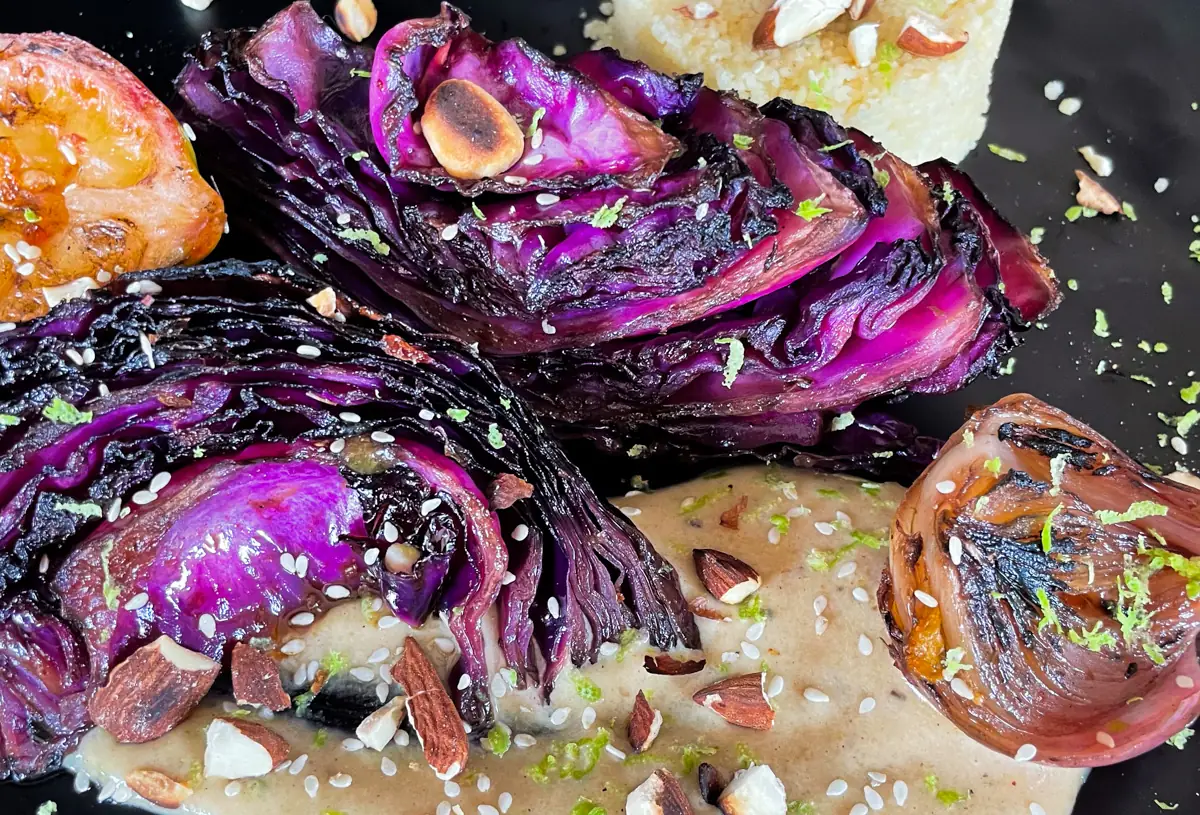

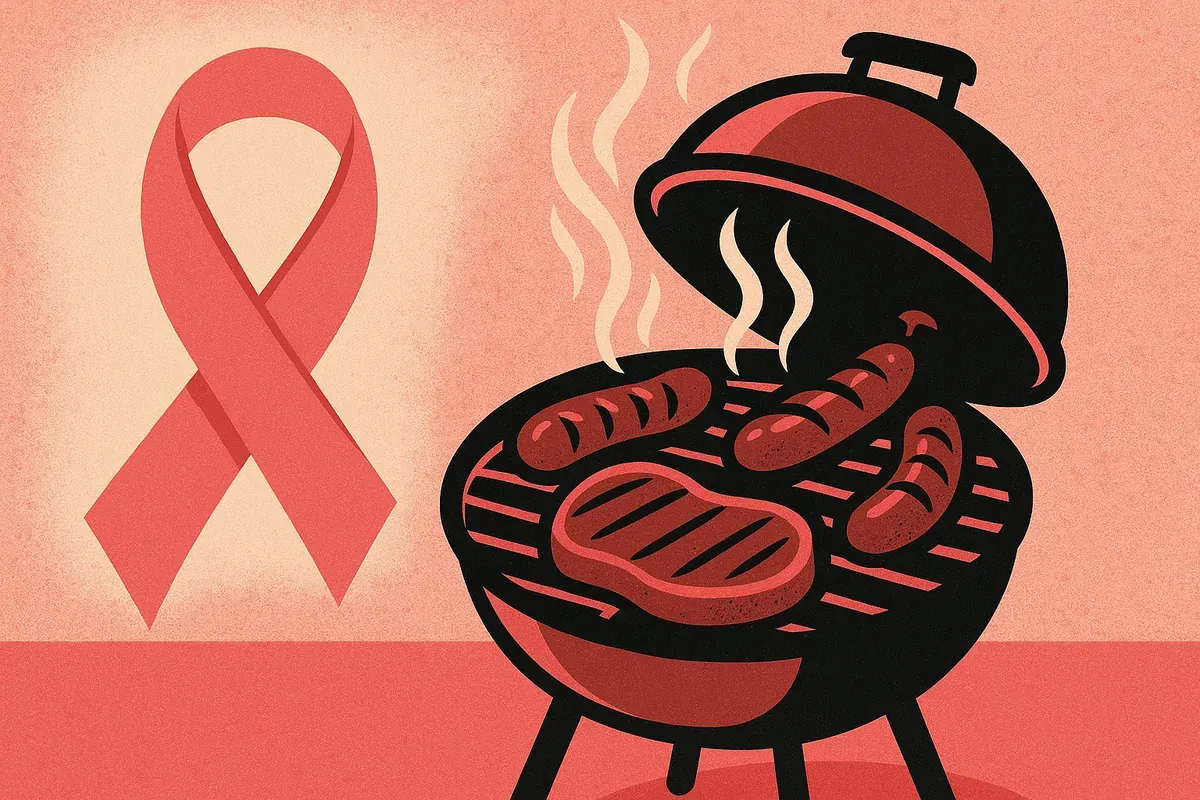
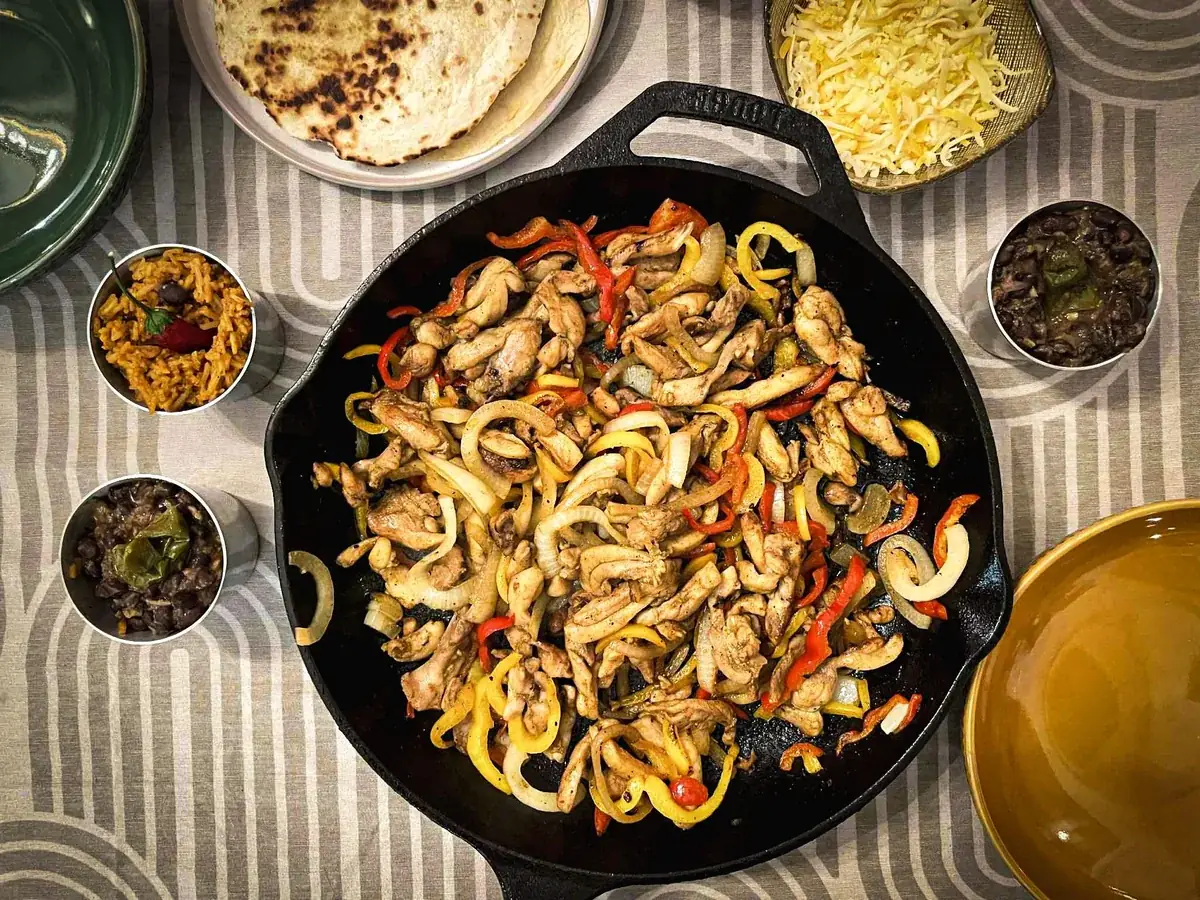
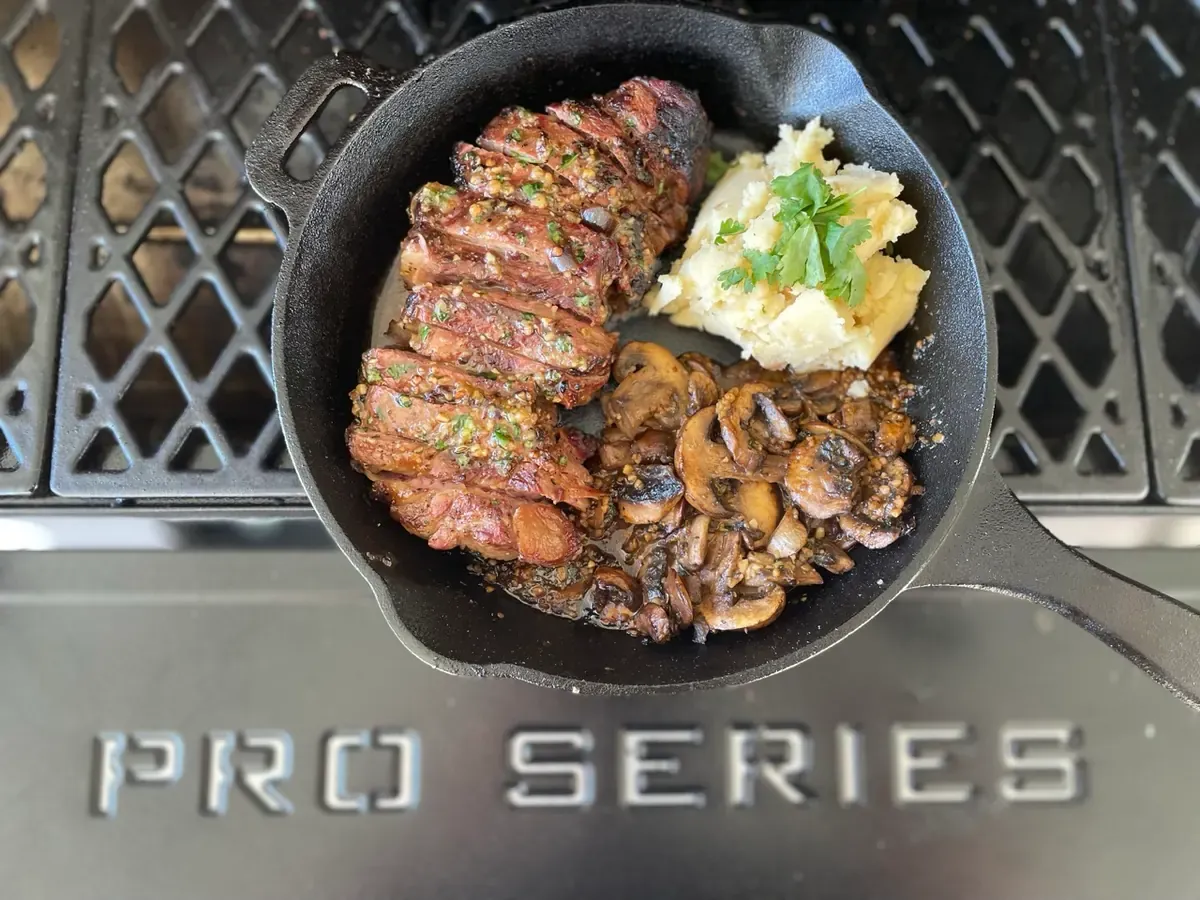
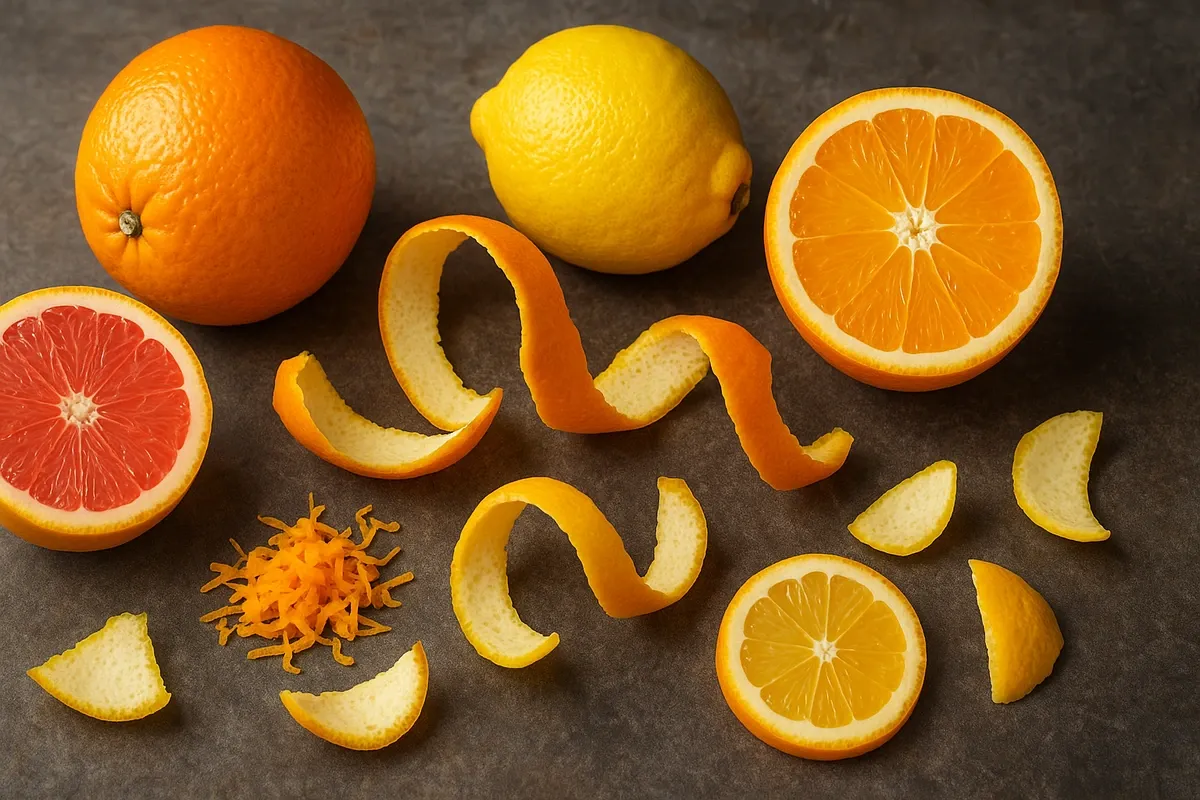
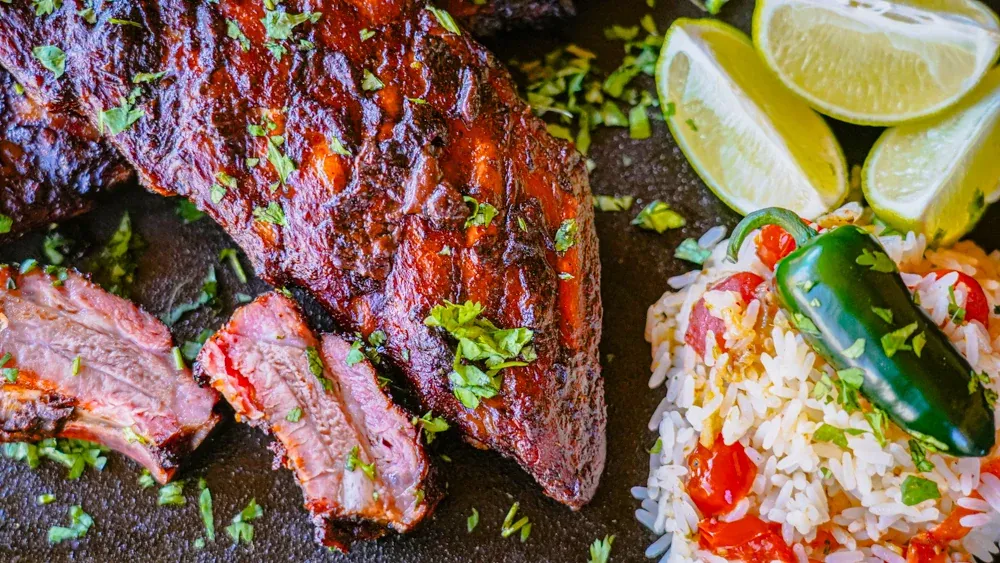
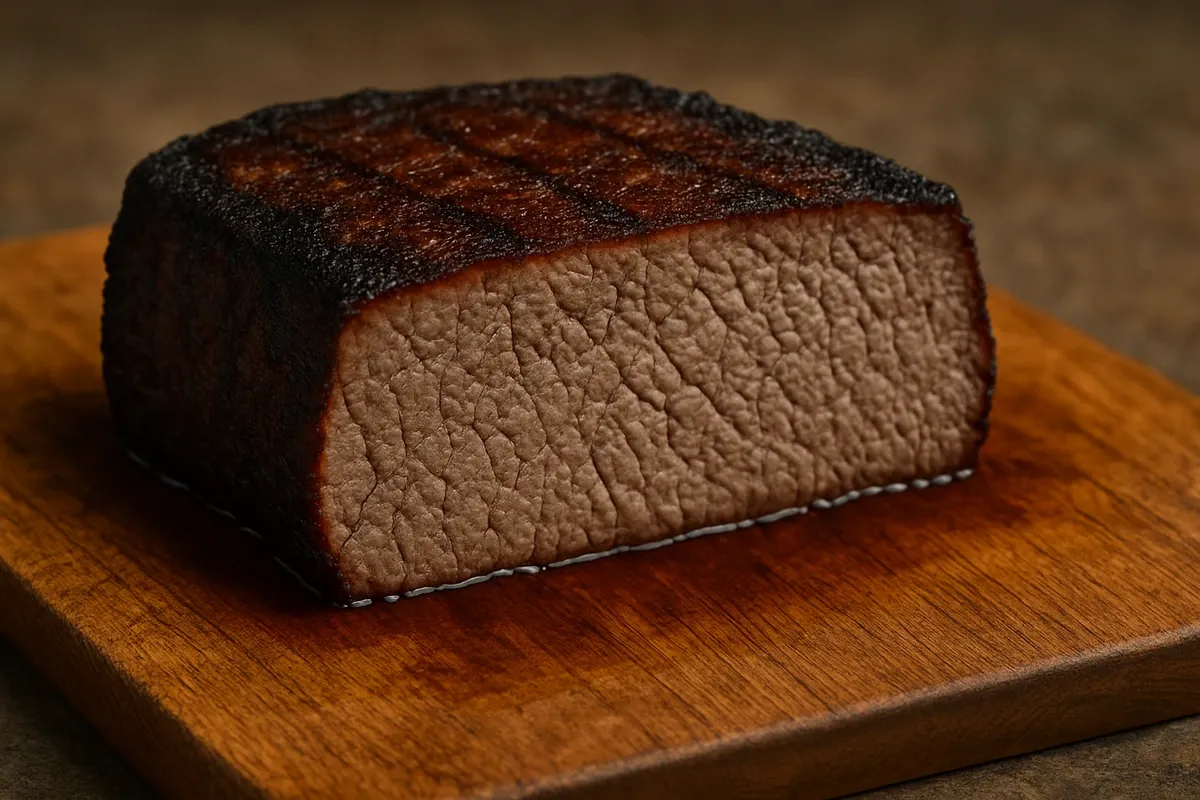
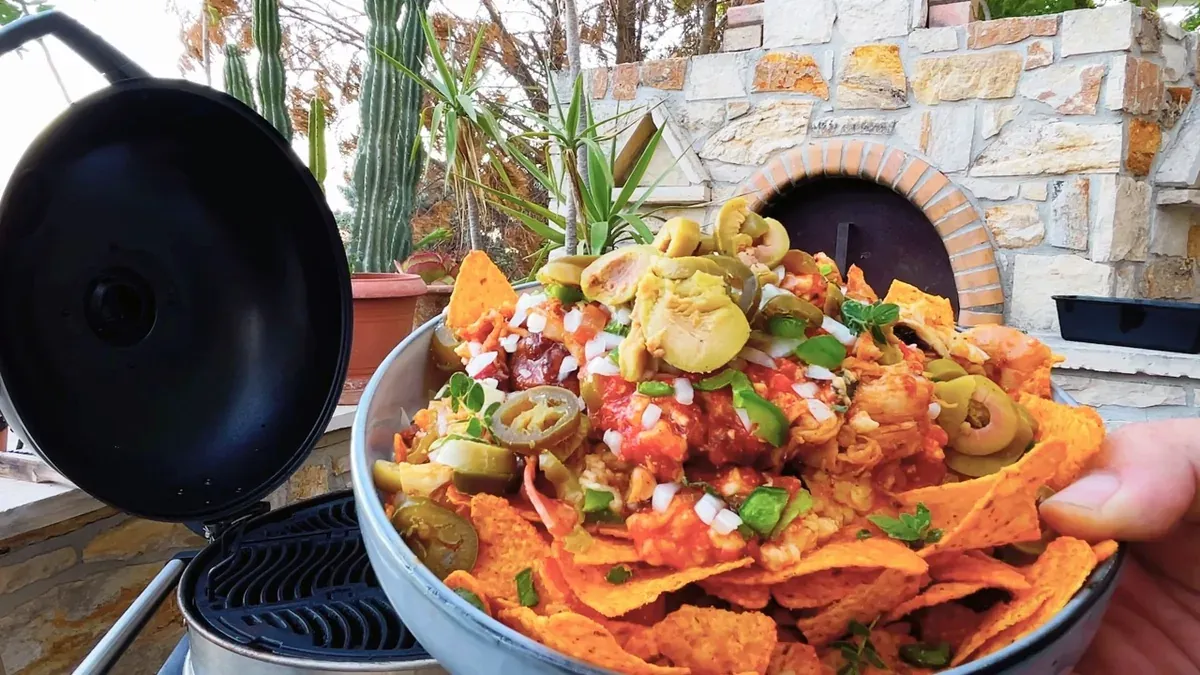

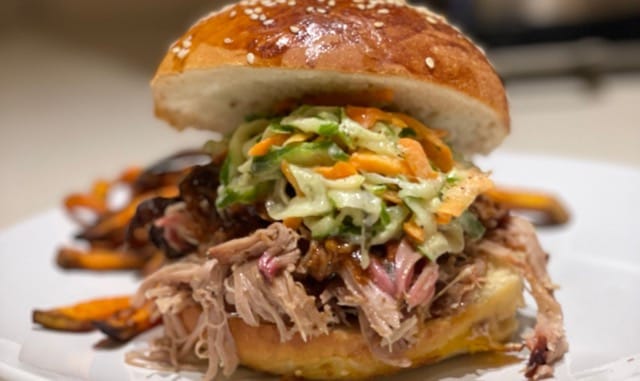
Discussion